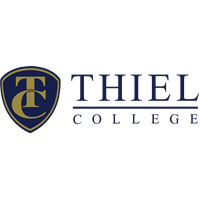Below is a summary of the abstract you submitted. Presenting author(s) is shown in bold.
If any changes need to be made, you can modify the abstract or change the authors.
You can also download a .docx version of this abstract.
If there are any problems, please email Dan at dar78@pitt.edu and he'll take care of them!
This abstract was last modified on March 15, 2022 at 2:15 p.m..

Thiel College first implemented the SEA-PHAGES program in Spring 2019 and utilized Microbacterium foliorum (M. foliorum) as our host bacterium. The SEA-PHAGES program also inspired several senior research projects which utilized other hosts such as Arthrobacter sulfureus, Gordonia terrae and Gordonia rubipertincta. In total, 155 students at Thiel have discovered 31 bacteriophages (phages) with most of them being M. foliorium phages. Bacteriophages are viruses that infect bacteria. In the phage discovery semester, we obtained high titer lysates by creating webbed plates and then extracted DNA to be sent for sequencing. In the bioinformatics portion, PECAAN and DNA master were utilized to annotate 8 phages and 5 have been entered into Genbank, with one more currently being sequenced an annotated this semester. Four of the phages (Rona, Kenzers, BabyYoda, and Lynlen) have been identified as cluster EB and 1 of each in EA (Renzie), EF (Haunter), EG (RobinRose). The last phage is BaileyBlu which has been identified as singleton, however interestingly shares nucleotide and gene identity with AZ phages. Another phage Prada was discovered in the same stream 1.5 years after BaileyBlu and sequencing. In the future, annotation of Prada would be fascinating to determine if any similarities to BaileyBlu have developed over the course of Prada’s genomic evolution. This would be useful for upcoming phage research. 5 of the phages, BabyYoda, Lynlen, Renzie, Haunter and RobinRose were submitted to Genbank. This semester we are sending 4 more phages for sequencing including, Swalay, ThirteenKH, Altheus and ROMM. We are looking forward to utilizing DNA Master to annotate these phages and determine which clusters they fall into. This research has been important in contributing to the SEA-PHAGES phage database and to further the research on the genomic evolution of phages.
